Looking for places to stop on my drive back to Cardiff at the end of my 2019 north Wales road trip, I came upon Powis Castle, a National Trust property just outside Welshpool in mid Wales.
It’s an enormous castle with stately interiors and a glorious garden, and as it was a third of the way into my five-hour journey, it seemed the perfect place to stop and stretch my legs.
Sitting high on a rock overlooking the rolling hills of the Welsh countryside, Powis Castle is a striking and unusual sight, as it’s built of red rock rather than the grey stone of so many other Welsh castles.
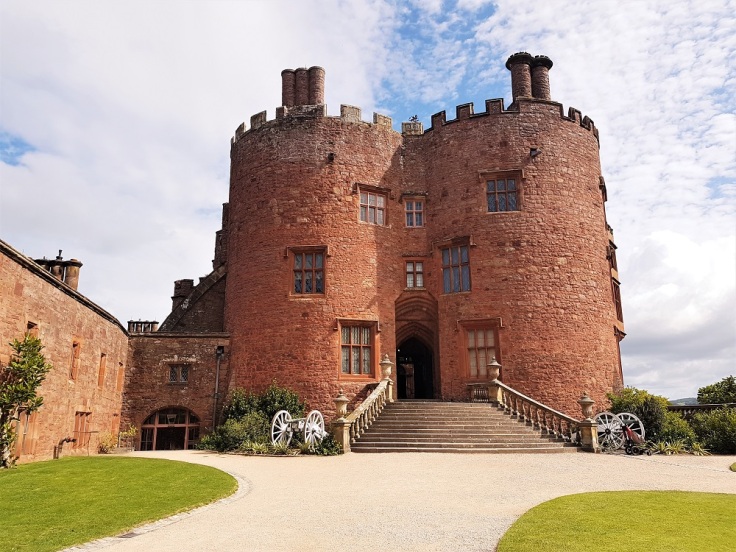
Powis Castle dates back to the late 13th century when it was founded by Prince Gruffudd ap Gwenwynwyn of Powis Wenwynwyn, an ally of King Edward I’s who was given permission to build his own castle as a reward for his loyalty to the English crown.
The medieval fortress underwent major rebuilding in the 1530s, before it was bought by Edward Herbert, the second son of the Earl of Pembroke, in 1587.
In the late 18th century, Lady Henrietta Herbert, heiress to the estate, married Edward Clive, the son of Clive of India, and the two families subsequently combined their fortunes, with their son Edward taking the surname Herbert.
The castle remained in the family’s hands until 1952 when George Herbert, the 4th Earl of Powis, left it to the National Trust upon his death, his only two sons having died in the First and Second World Wars respectively.
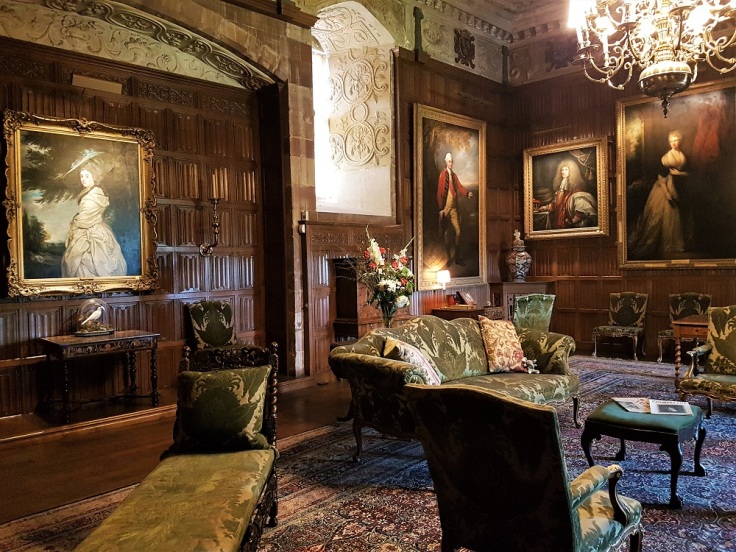
Inside the castle, the interiors were sumptuous and lavish, and it was clear it was once the abode of a very wealthy family. It was also massive, far bigger than most stately homes I’ve visited, with room-upon-room of gorgeously decorated interiors.
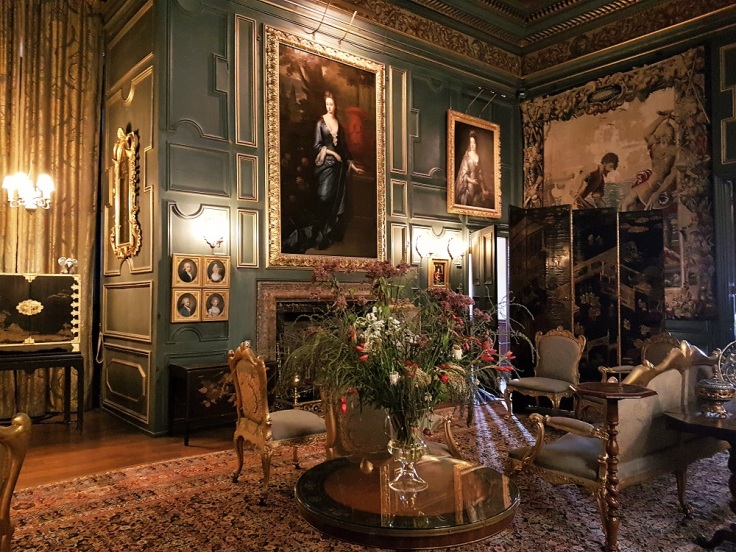
As I moved through the castle’s many living, drawing and music rooms, I was dazzled by the sheer number of rich, opulent spaces – they just seemed to keep on coming. And one of the things that really impressed me, aside from the sumptuousness of the furnishings, was how well preserved the rooms were.
Often when I visit stately homes, I find the interiors are a little shabby and threadbare or an empty shell of their former selves with maybe a few pieces of furniture if you’re lucky.
But Powis Castle was in excellent condition and the rooms fully furnished, I imagine they had been left as they were when the last of the Herbert family lived there.

Upstairs the bedrooms (above) were just as delightful as the living quarters, with grand four-poster beds, lush fabrics and heavy wooden furniture.
Even the bathrooms (below) were impressive, and far more luxurious and comfortable-looking than many stately home bathrooms.
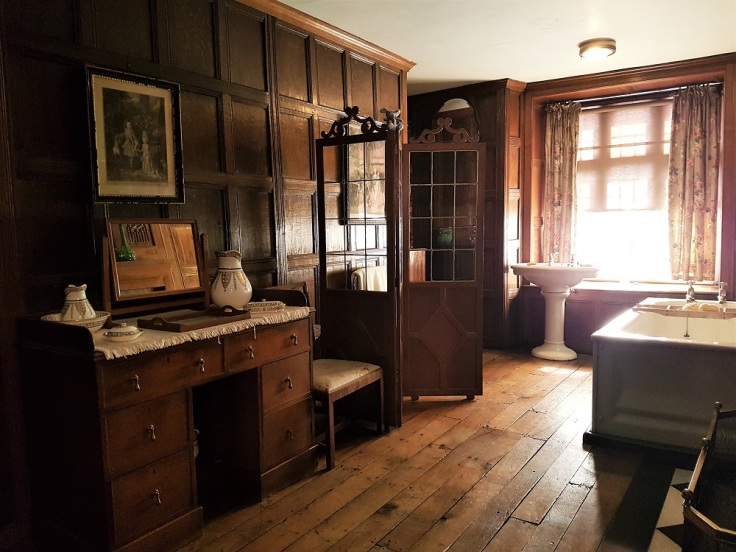
The most impressive of the bedrooms was the 17th century state bedroom (below). With its palatial 18th century four-poster bed draped in expensive-looking red fabric, it was a bedroom fit for a king.
Luckily for the Herbert family, a few kings or future kings popped by for a visit over the centuries, with King Edward VII and King George V among the royals who stayed at the castle.
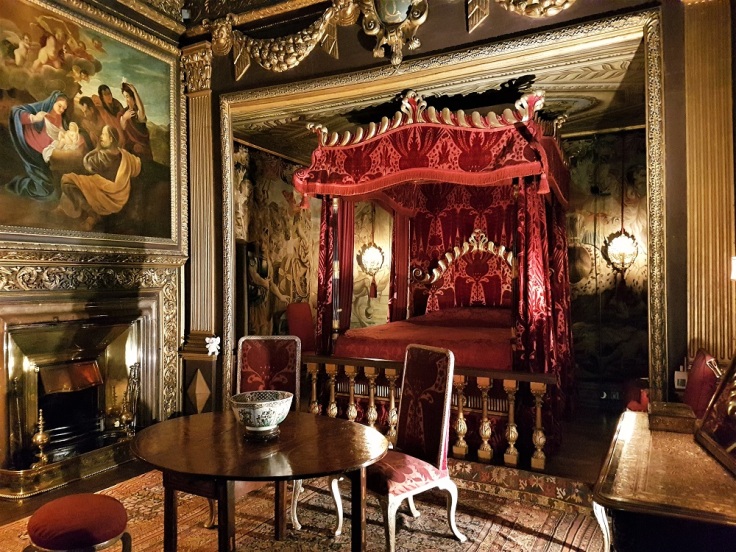
The upper reaches of the castle and some of what I presumed were the servants’ quarters downstairs were home to an exhibition commemorating the time the castle was turned into a temporary girls’ boarding school during the Second World War.
At the outbreak of the conflict, George Herbert was governor of the Welsh Girls’ School in Ashford, just outside London, and he invited pupils and teachers to decamp to the castle for safety.
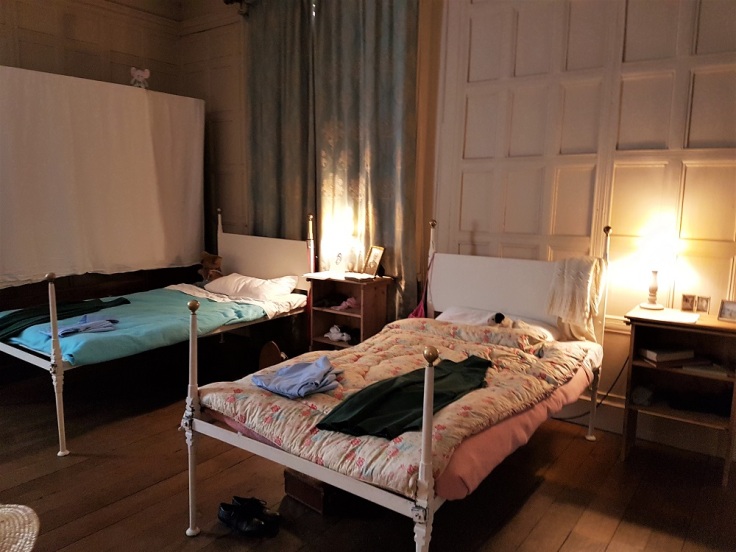
The upper reaches of the house showed the dormitory-like bedrooms where the girls slept (above), along with other rooms used by the school, such as the kitchen (below).
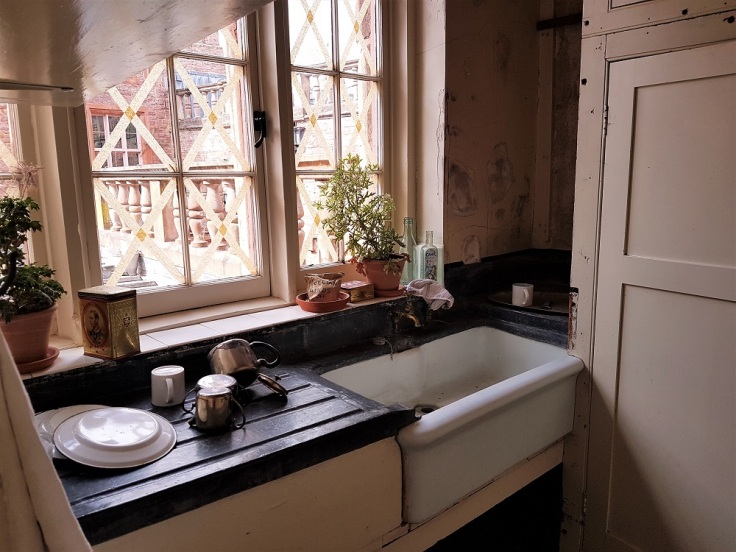
Downstairs, there were a number of rooms that had been used as classrooms (below), which gave visitors a glimpse into how they successfully turned this opulent castle into a working school.
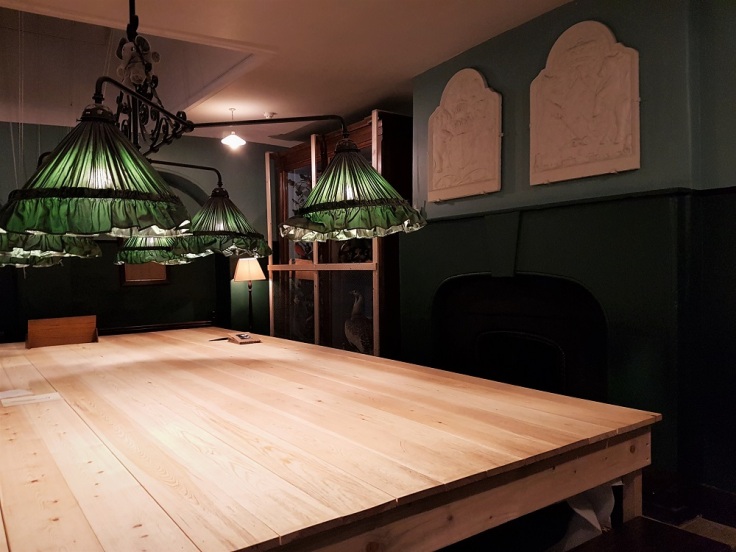
After the sumptuousness of the earlier rooms, it was a real change of pace and a fascinating insight into how this stately home mucked in and helped out as part of the war effort.

Having seen everything there was to see in the house, I made my way outside to the castle’s equally impressive garden.
The garden dates back to the 1680s when William Herbert, the 1st Marquess of Powis, commissioned the architect William Winde to design a garden that stretched from the steep rock on which the castle is perched to the green fields below.
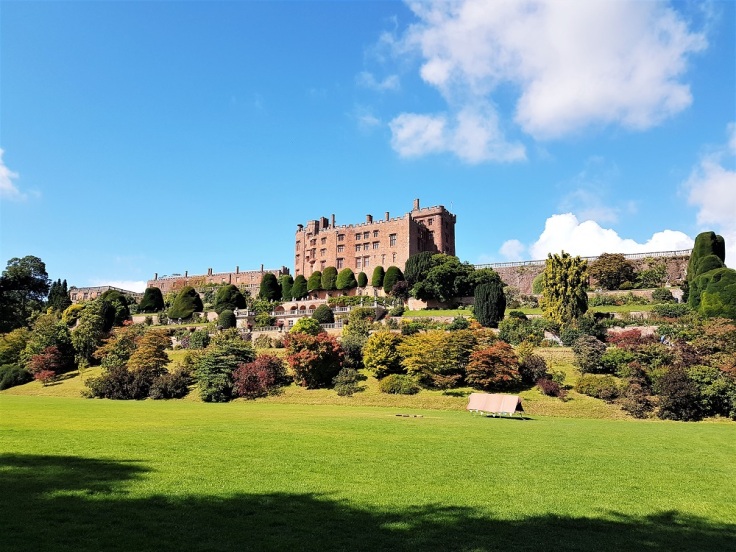
Over the centuries, the south-facing garden’s terraces, green lawns and woodland areas have been remodelled according to the tastes of various family members.
The last family member to take a keen interest in the garden was Lady Violet, wife of the 4th Earl of Powis, who designed the formal garden in the early 20th century.

The garden directly below the castle was made up of four rows of flower-filled terraces that led down to a huge expanse of lawn at the bottom of the hill.
The centre of the terraces was dominated by a strikingly pretty and romantic orangery (below), which commanded fine views over the rest of the garden and the countryside below.
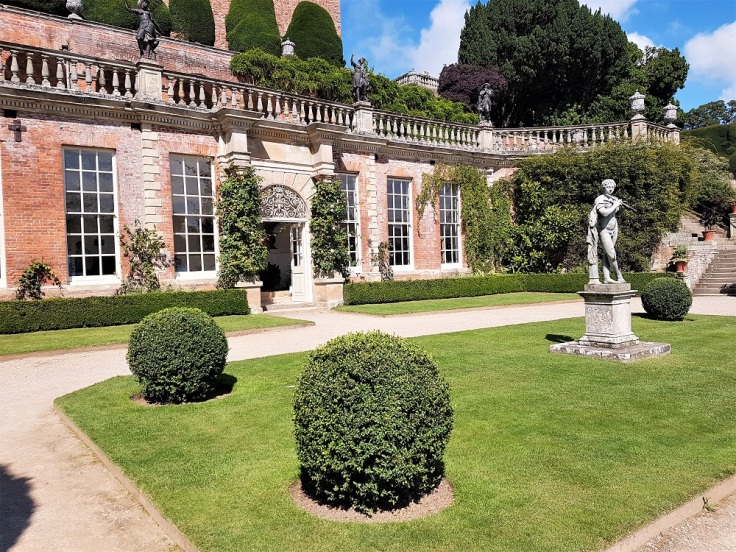
Beyond the terraces and great lawn were Lady Violet’s attractive formal garden, the fountain garden and the croquet lawn.
The former was home to a delightfully curious and confident peacock (below) that strutted about amid the flower beds in all its glory.
The peacock was fabulous and I spent ages watching it as it ambled among the flowers and hedges, seemingly oblivious to the many human visitors around it.

The outer edges of the garden were framed by woodland and the trails through the woods pass the Herbert family’s pet cemetery, a plunge pool and an ice house, and culminate in the stable pond (below) at the far end of the garden.
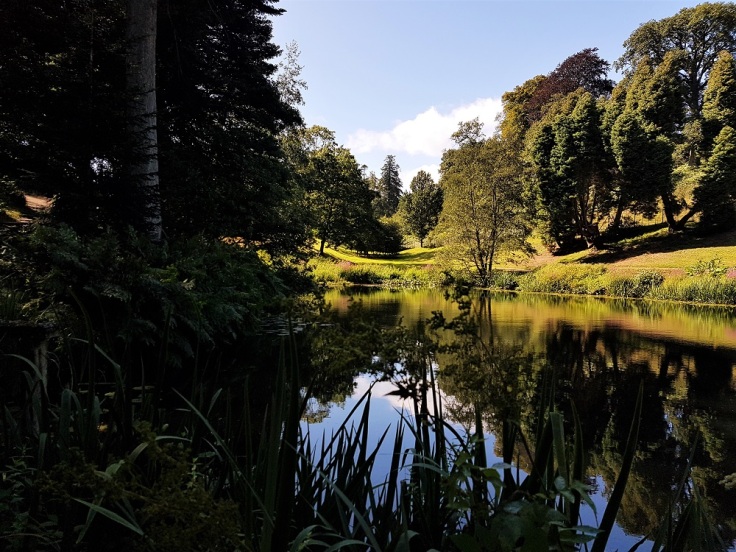
The stable pond was spectacular and very quiet, as it didn’t seem as though many visitors ventured that far, preferring to spend their time playing and picnicking on the lawns or admiring the flower-packed terraces and formal garden.
I enjoyed my visit to Powis Castle (a few slightly rude staff members/volunteers aside) and it far exceeded my expectations.
I hadn’t known much about the castle before my visit (in fact, I hadn’t known it existed until I found it on the map) and so I wasn’t expecting a lavishly decorated, fully lived-in medieval castle with breathtakingly beautiful gardens. It’s worth a visit if you’re in the area.
Info
Powis Castle, Welshpool, Powys SY21 8RF
nationaltrust.org.uk/powis-castle-and-garden
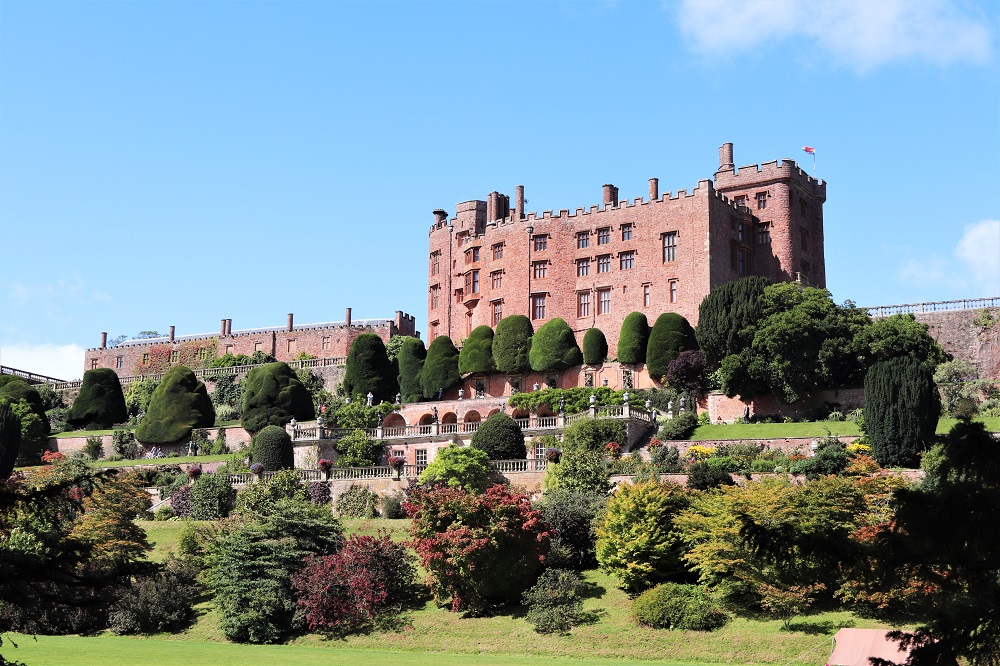
I enjoyed all of these posts. I don’t know Wales well and would love to rectify that when the world gets back to “normal”.
LikeLiked by 2 people
Thanks Annabel, I’m glad you enjoyed them. I feel the same way about Scotland. My mother’s Scottish and while I spent a lot of time in Scotland as a child, I’ve barely spent any time there as an adult. I’d love to revisit once it’s safe to do so again.
LikeLiked by 2 people
What a stunning property. I’m not familiar with mid-Wales… must rectify that one day, as Powis Castle looks well worth a visit! It must take a lot of work (and money!) to maintain those interiors and expansive gardens. It’s funny how peacocks strut around seemingly oblivious to the people around them. On a bike ride over the summer, we saw one preening in front of a shiny car. Quite a sight!
LikeLiked by 2 people
It’s well worth a visit if you’re ever in the area, it’s an incredible place. I can’t begin to imagine how much work is involved in keeping these places in such excellent condition – probably far more than I realise!
LikeLiked by 2 people